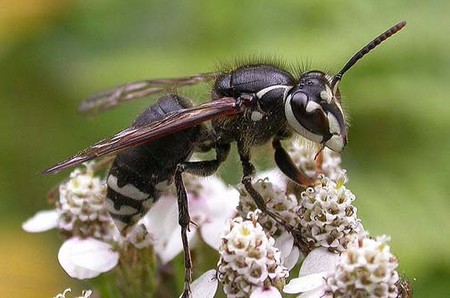A wasp is a kind of flying insect that can sting. It belongs to the order Hymenoptera of class insecta. This is a class of the phylum Arthropoda of the Kingdom Animalia. Some of the characteristic features of wasps are:
- Almost all the varieties of wasps have a pair of wings with an exception of few families.
- All the species of wasps are terrestrial.
- Wasps are parasitic or predators. They prey other terrestrial insects and arachnids.
- Almost all the species of wasps have little or no thickened hairs.
- An ovipositor or a stinger is carried out by all the female species of wasps.
Broadly speaking, wasps are divided into two broad categories, i.e.
- Solitary Wasps – as the name suggests, these species of wasps prefer to live a solitary life. These become fertile when mature.
- Social Wasps – these wasps live in colonies and work along with each other. These wasps live in nests. In nests, either a queen laid eggs or every individual wasp reproduce.
It is believed that wasps have over 4,000 different known species which belong to different families and super families of the order Hymenoptera. Following are given some of the different types of wasps.
Bald Faced Hornet
Bald faced hornets are the wasps belong to the family Vespidae of wasps. Biologically, these are called Dolichovespula maculate. These wasps belong to the social wasp’s category and live in large nests hanging from the tree branches. In the colonies of bald faced hornets, queen is responsible for laying eggs through mating with males. They have smooth stingers which they use to sting when anyone enters in their territory zone. These are aggressive wasps which don’t allow any trespassing or intrusion. The stingers of these wasps usually carry venom with it and can cause harm to human beings. Swelling, itching, and allergic symptoms are often associated with sting of these wasps. The diet of these wasps consists of fruit and nectar juices.
Yellow Jacket
These wasps also belong to the family Vespidae. The biological name for these wasps is Vespula vulgaris. These are called yellow jacket wasps because of having yellow and black strips on their small bodies. Their habitat normally located in garbage cans, underground spaces, holes in the walls, or even in shrubs or trees. An interesting fact about these wasps is that they have small nests where a queen is accountable for laying eggs and the queen leaves the nest after a year to let the wasps behind for dying. These wasps lived on fruits, meat and sweets. These are commonly found in the areas with human population. The sting of these wasps can cause skin allergy, if you ever get stung by once of these, we suggest to check the curex reviews to find a treatment.
Ammophilia
These wasps belong to the family Sphecidae and are commonly known as Aphoid wasps. These wasps are not considered as aggressive as bald faced hornets, though a female wasp can sting on humans if threatened. They have thin bodies and a long narrow waist. These are black in color with red or dark red strips on the abdomen. These wasps are widely preferred for the bio-pest control because this species of wasps lived on the insects that are considered harmful for humans. These wasps are known to be the native of eastern regions of the world.
The Cuckoo Wasp
The cuckoo wasp is a member of family Chrysididae. These bright, metallic wasps are found in blue, green and red color. They are known for making underground nest which are large enough to accommodate over 1500 individual wasps in it. Like bald faced hornets, these are also very aggressive and don’t allow any intrusion in their territory. The diet of these wasps comprise of other insects and nectar of flowers. Although, these creature are relatively smaller in size, but their sting can cause itching, swelling or allergy on the skin of the humans. An interesting feature about these wasps is regarding their reproduction process where individuals mates instead of laying eggs in their own nest, lay eggs in the nests of other species of wasps and of bees.


